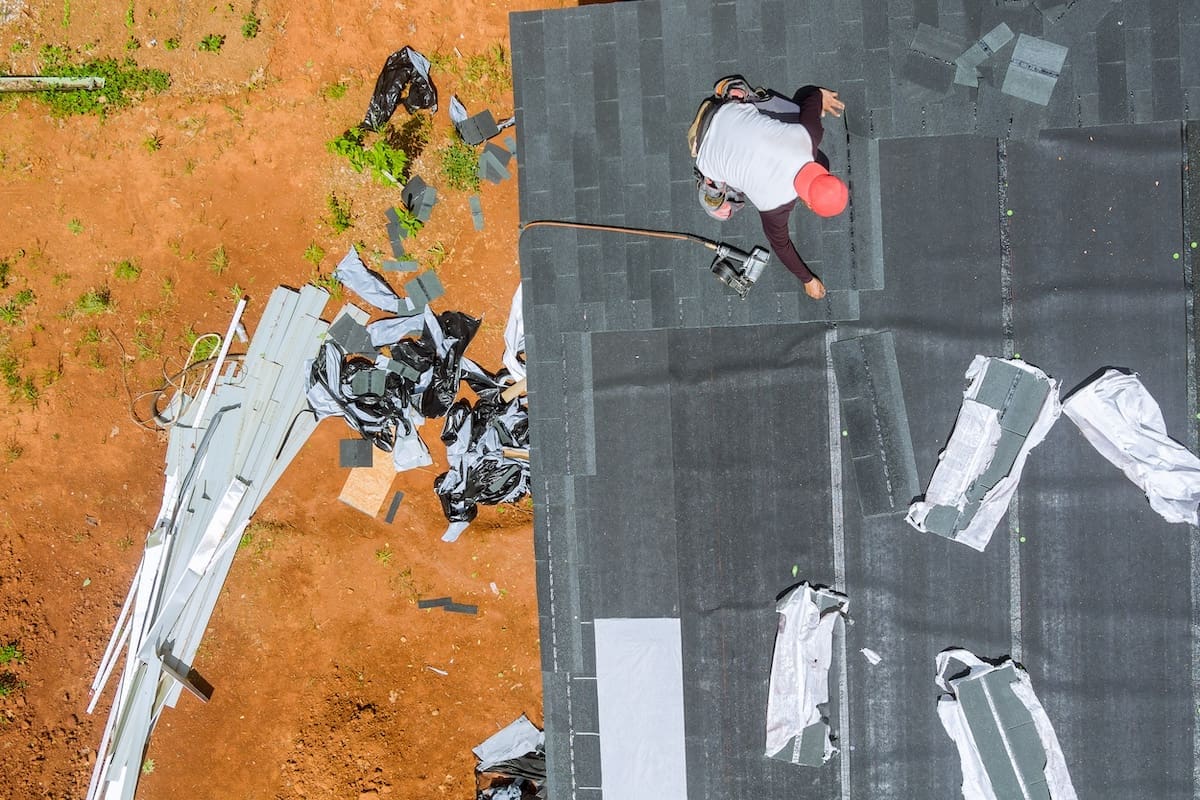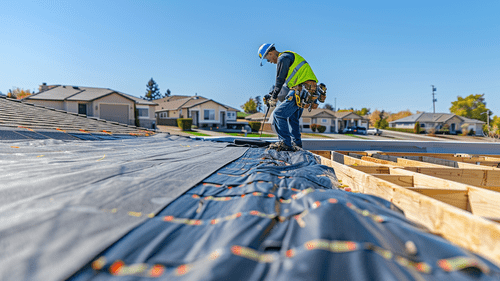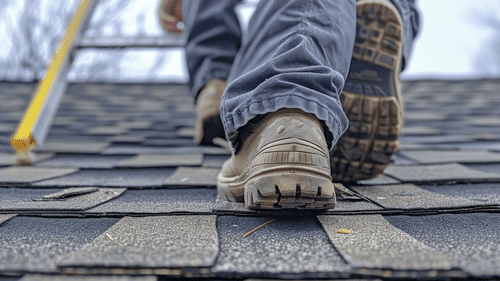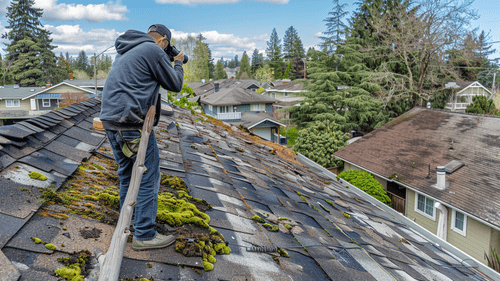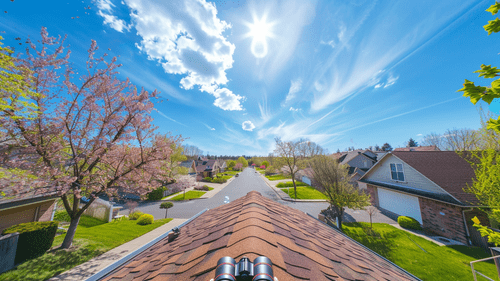Introduction
In Texas, where roofs endure relentless sun, powerful storms, and everything in between, regular maintenance is the key to extending the life of your roof and avoiding costly repairs. Have you ever wondered how much proactive care can truly impact your roof’s longevity? It’s not just about fixing leaks or replacing shingles—it’s about understanding the unique challenges your Texas roof faces and taking the right steps to protect it.
This guide is tailored to Texas homeowners and covers everything you need to know about effective roof maintenance. From spotting early signs of damage caused by harsh weather conditions to scheduling inspections and choosing the right professionals for the job, we’ll walk you through practical strategies to keep your roof in top shape.
Why wait for storm season to expose vulnerabilities when you can address them now? Learn how often to schedule inspections, what to look for between professional checks, and how routine care can save you thousands of dollars in repairs. With our expert advice, you’ll gain the tools and knowledge to ensure your roof withstands the Texas heat, hail, and hurricanes while continuing to protect your home for years to come.
Understanding Your Roof's Lifespan and Maintenance Needs
The lifespan of your roof largely depends on the materials used in its construction. Asphalt shingles, for example, are among the most common and provide about 20 to 30 years of service life, while materials like metal, tile, and slate may last 50 years or more with proper care. However, it's important to note that these durations can be significantly reduced by environmental factors. For instance, roofs in areas prone to severe weather events such as hail, hurricanes, or heavy snowfall may experience accelerated wear and tear.
Environmental impacts are not limited to weather. Factors such as nearby trees can lead to debris accumulation or shading that promotes the growth of moss or algae, which can undermine the integrity of roofing materials. Given these variables, the importance of timely inspections becomes clear. As suggested by Forbes, after half of your roof's expected lifespan has passed, professional inspections every three to four years are advisable to preemptively address potential issues.
The Right Time for Inspections
Regular inspections are essential for effective roof maintenance. While the general recommendation is to have your roof inspected at least once every two years, this frequency should be adjusted based on the age of your roof and local environmental conditions. For instance, if your roof is older or if you live in a region with extreme weather, more frequent inspections are prudent to identify and mitigate any emerging issues before they escalate.
Homeowners should be vigilant about specific signs that might indicate the need for an earlier inspection:
- Missing, cracked, or curled shingles
- Noticeable sagging or visible structural inconsistencies
- Water stains on ceilings or walls inside the home
- Build-up of granules in gutters, indicating shingle wear
Recognizing these signs can help in scheduling inspections proactively, rather than reactively responding to damage, potentially saving on costly repairs.
Professional Inspections vs. DIY: Making the Right Choice
While DIY projects can be tempting for the hands-on homeowner, roof inspections are best left to professionals. The benefits of professional inspections are significant. Roofing experts are equipped with the knowledge to identify less obvious signs of wear and potential vulnerabilities. They can assess issues like improper flashing, compromised shingles, or inadequate ventilation—factors that might not be apparent to the untrained eye.
Conversely, DIY inspections carry risks. Without proper training and safety equipment, homeowners expose themselves to potential injury. Moreover, unprofessional inspections might not lead to accurate diagnoses, leading to neglected minor issues that could evolve into major problems. Professionals use a variety of tools and techniques to thoroughly assess a roof's condition, ensuring that all potential issues are noted and appropriately addressed.
Proactive Maintenance Practices
To maximize the longevity of your roof, engaging in routine maintenance is essential. Homeowners can undertake several tasks to keep their roofs in good condition:
- Regularly cleaning gutters to prevent water build-up and damage
- Trimming overhanging tree branches to reduce debris and excess shade
- Inspecting for moss and algae growth, which can be gently removed with specialized cleaning solutions
However, certain maintenance tasks should prompt a call to professionals. These include:
- Replacing damaged or missing shingles
- Repairing areas of the roof where water is pooling
- Addressing structural sagging or significant damage from environmental impacts
Seasonal care also plays a critical role in roof maintenance. Before the onset of harsh weather seasons, such as winter or rainy periods, it's advisable to have a professional inspection to ensure that your roof is prepared to handle the upcoming conditions. This proactive approach not only preserves the structural integrity of the roof but also provides peace of mind knowing that your home is protected against potential weather-related damages.
By adhering to these guidelines, homeowners can effectively extend the life of their roofs, ensuring continuous protection of their homes while optimizing their investment in roof maintenance.
Conclusion: Securing Your Home's Shield
Through regular maintenance and professional inspections, homeowners can significantly extend the lifespan of their roofs, safeguarding their homes against potential damages and ensuring peace of mind. Recognizing the signs of wear, such as missing shingles or water stains, and responding proactively, not only prevents minor issues from escalating but also contributes to the overall health of your roof. By engaging with professionals who bring expertise and efficiency to every inspection, you ensure that your roof remains in optimal condition, ready to withstand whatever challenges the environment may present.
Ultimately, the roof over your head serves as more than just a structural necessity; it represents a commitment to protecting your home and everything within it. Don't wait for the first sign of a leak to consider the condition of your roof. Regular checks and maintenance are essential for a long-lasting roof and a secure home. Remember, the goal is not merely to avoid repairs; it involves preserving the sanctuary that your home provides.

